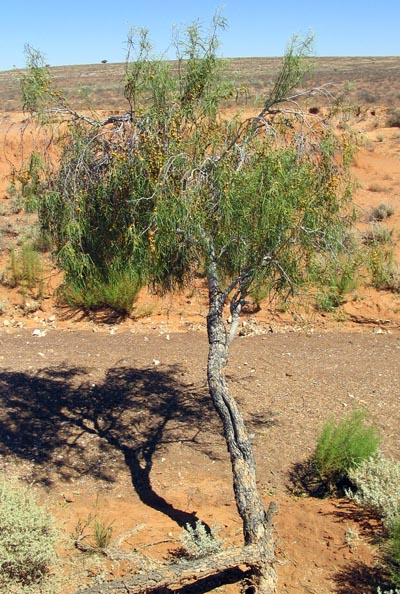Pittosporum angustifolium
weeping pittosporum
(butterbush)
Described variously as the butter bush, native apricot,
cattle bush, native willow or cumby cumby, the weeping pittosporum is
an attractive large bush to tree. It was formerly know as the Pittosporum
phylliraeoides according to Kutsche and Lay (2003).
The weeping pittosporum is found normally along dry creek
beds at Fowlers Gap, and is not terribly common, but it IS terribly pretty!
It's fruit is NOT edible, being extremely bitter.
It is a shrub to slender tree which may grow to 10 m tall.
Bark: grey-white or mottled rough, distinctively white on maturity.
Leaves: alternate, 40-120 x 4-12
mm, tapering to both ends, apex pointed and often hooked. Foliage is glabrous
and pendulous (drooping).
Flowers: occur in small axillary
clusters, tubular, with 5 spreading or reflexed
lobes 7-12 mm long, cream or pale yellow, fragrant.
Fruit: a bright orange ovoid capsule 10-22 mm long, splitting into
two revealing 4-14 seeds in sticky pulp.
Sources: Frank Kutsche and Brendan Lay (2003). Field guide to
the plants of outback South Australia. Department of Water, Land and
Biodiversity Conservation, South Australia, ISBN 0 7590 1052 8.
Phillip Moore (2005). A guide to plants of inland Australia. Reed
New Holland, ISBN 1 876334 86 X.
Photos: Ian Roach
Back
|

 |







